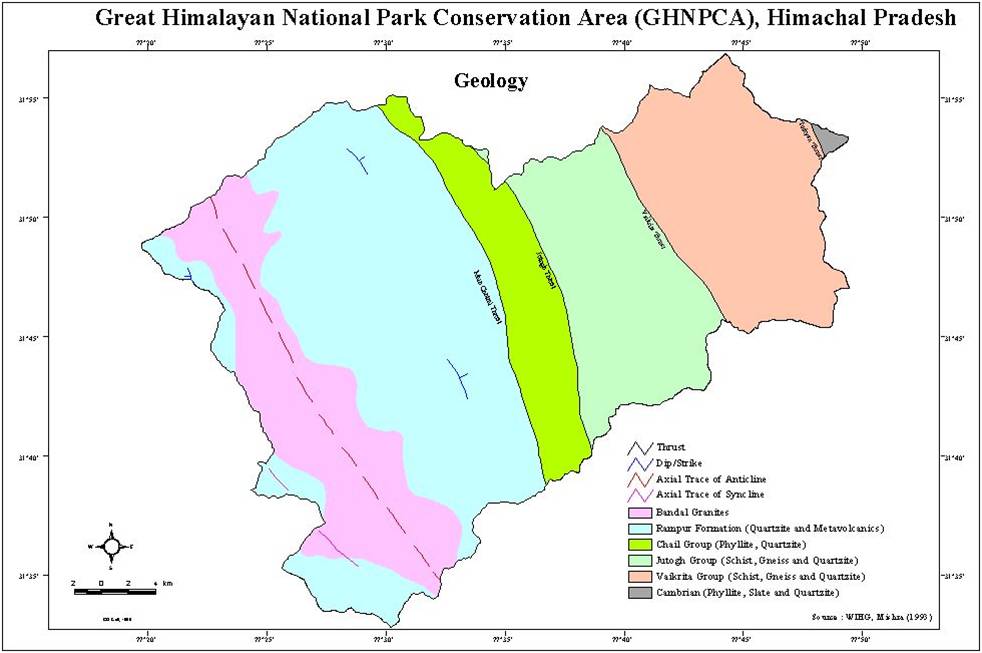
Geology
Geology
GHNPs geology is characterised by two major types of rock formation. Those of the Lesser Himalaya are crystalline in nature, whilst those of the Great Himalayan range are principally metamorphic .
The Lesser Himalaya’s formations consist of quartzites, phyllites, slates and schists. It is presumed that the Lesser Himalayan crystallines originated in the Himalaya’s Central Crystalline Zone which was subsequently folded and thrust as a consequence of various tectonic episodes.
The lower slopes exhibit sedimentary structures – created by the accumulation of mineral and organic fragments deposited by water and ice – with major formations intergrading near the Rampur, Jutogh, and Chail formations. The Rampur formations are considered the oldest, at around 2,500 million years.
Towards Larji and Kullu, the rock formations exhibit low-grade metamorphosis (formed under extremes of temperature and pressure) and are often referred to as the Chail group, ranging from 1,200 to 1,400 million years old. This group has two nappes – sheets of rock that have been thrust from their original position by earth movements – the Kullu Nappe overlying the Crystalline Nappe.
The Chail group is tectonically overlaid by the medium-grade metamorphic Jutogh group. Karchham quartzite, estimated to be between 1,800 and 2,000 million years old, is sandwiched between the layers of this group.
The metamorphic rocks of the Great Himalayan range were formed some 500 to 540 million years ago, and emplaced in approximately their current locations 19 to 21 million years ago. This zone is situated between two great thrusts – the Main Central in the south and the Tethyan in the north.
The largest outcrops of Central Crystallines are exposed in the zone and are divisible into three groups: lower; middle and upper. The lower group consists of mica feldspar gneisses with high-grade minerals such as sillimanite. The middle group is formed of calc-silicate and quartzite. The upper group is predominantly biotiteschist, grading into un-metamorphosed sedimentary rock.



